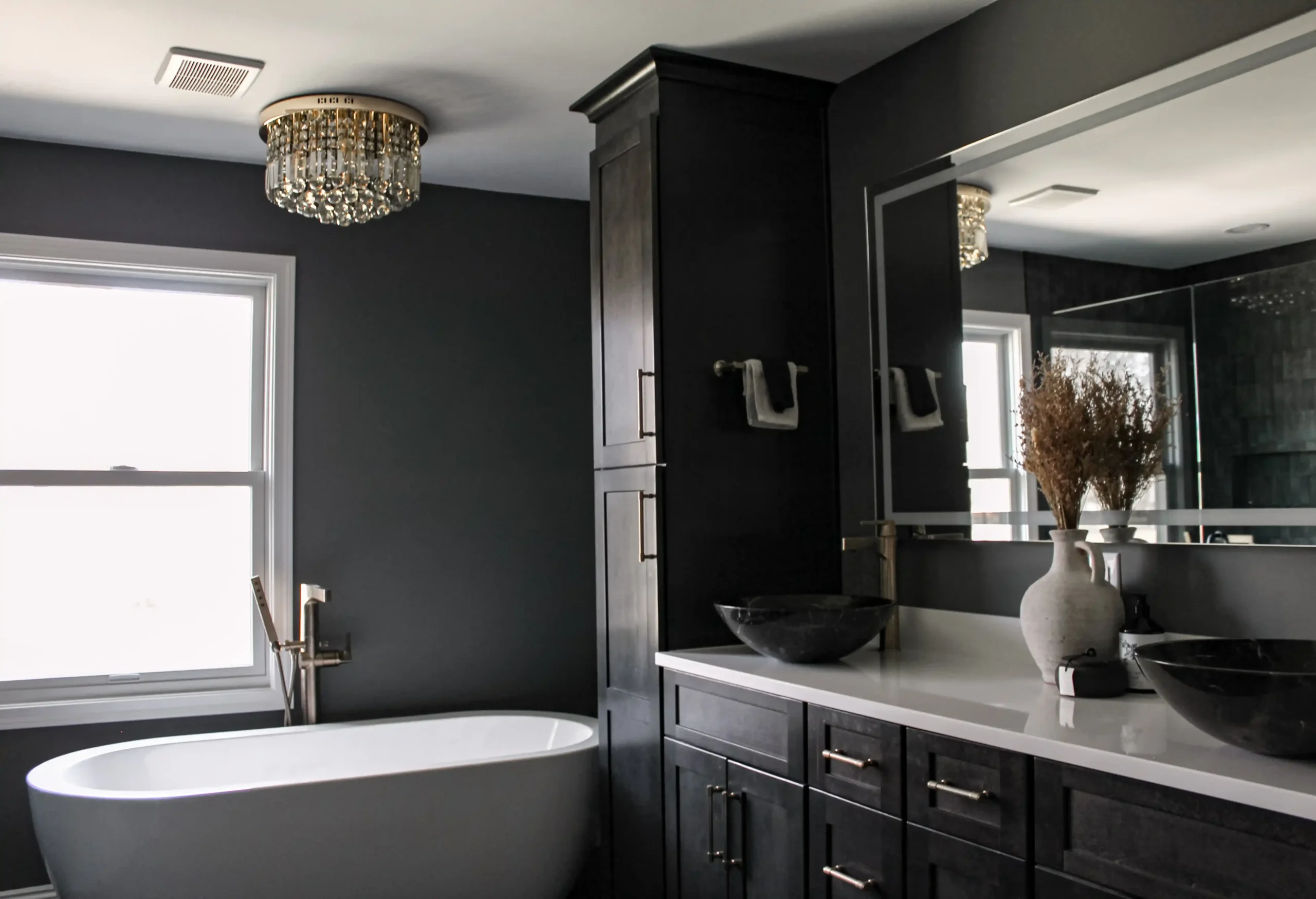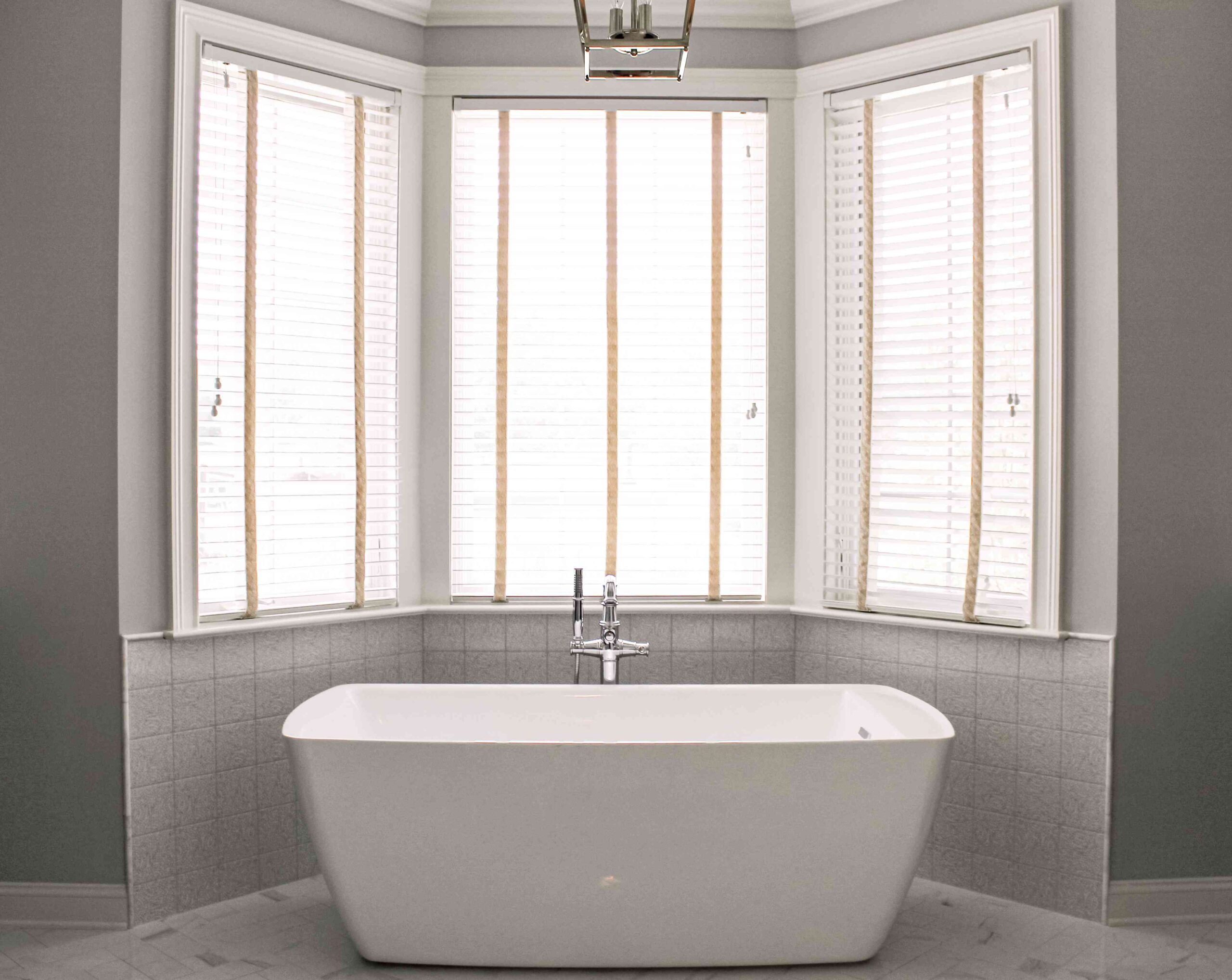When remodeling or refreshing a bathroom, color choice is one of the most important design decisions. The right shade can influence the atmosphere of the space, enhance natural and artificial light, highlight premium fixtures, and even make a small bathroom feel larger. At Element, we know that every detail matters, and wall color sets the foundation for a bathroom that feels both beautiful and functional. Below are the five best colors for bathrooms and how each can transform your space.
Soft Seafoam Green
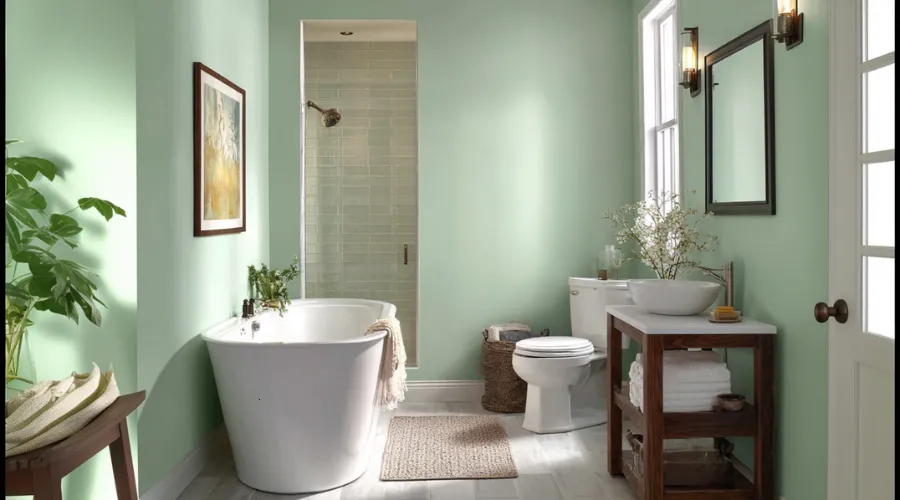
Soft seafoam green is a calming, spa-like color that evokes the serenity of ocean water and fresh air. It has just enough vibrancy to feel uplifting while remaining subtle and sophisticated. In a bathroom, seafoam green softens the hard edges of materials like glass, tile, and metal, creating a more inviting environment. This color works particularly well in spaces where you want to encourage relaxation, such as a primary bathroom with a soaking tub or a guest bathroom meant to feel like a retreat.
Pairing seafoam green with bright white fixtures creates a crisp, clean contrast that keeps the space from feeling overly muted. Adding natural wood accents such as teak or walnut can warm up the palette and provide balance. Seafoam also harmonizes beautifully with brass or bronze fixtures, giving the bathroom a luxurious edge. Whether you use it for an accent wall or commit to the entire space, seafoam green has the power to make your bathroom feel fresh and restorative.
Crisp Pure White
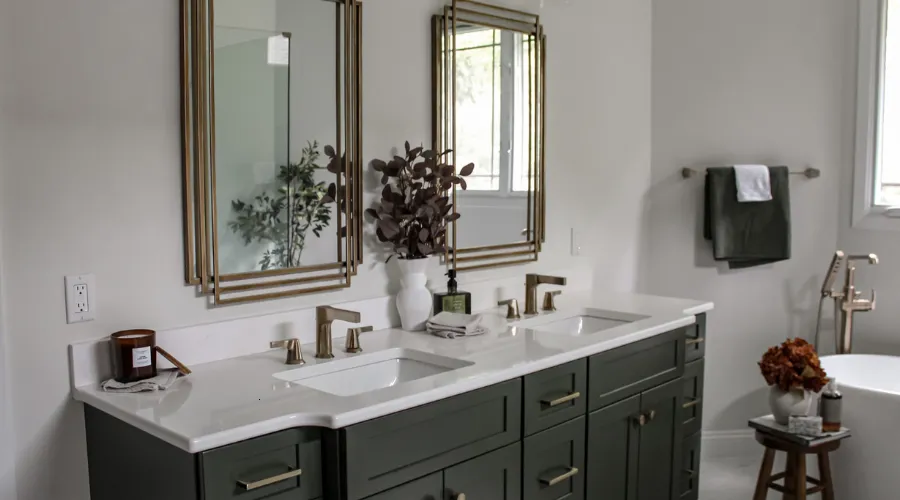
White is timeless, elegant, and endlessly versatile, making it one of the best colors for any bathroom. A crisp pure white reflects light beautifully, which is particularly important in bathrooms that lack natural daylight. White walls make a small space feel larger, cleaner, and brighter, while also providing a perfect backdrop for showcasing tile work, countertops, and fixtures.
Using white in a bathroom does not have to feel sterile. Layering different shades and textures adds interest and depth while staying within the same color family. White also allows for flexibility in accent colors. Whether you prefer subtle touches of gray and beige or bold additions like navy or emerald, white walls make it easy to update your bathroom décor without a full remodel. To learn how much a master bathroom remodel is check out this article by Element. For homeowners who want a design that feels timeless and adaptable, pure white remains one of the most practical and beautiful choices.
Muted Charcoal or Deep Slate Gray
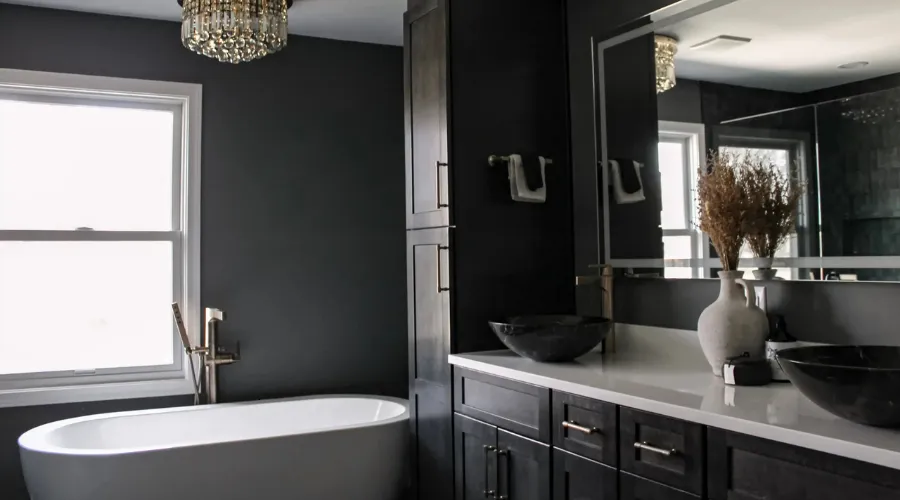
For those who prefer a bold, modern look, muted charcoal or deep slate gray can transform an ordinary bathroom into a striking design statement. Dark neutrals create drama and sophistication, bringing a sense of luxury into the space. Instead of reflecting light, these tones absorb it, creating an enveloping, intimate atmosphere. When used thoughtfully, charcoal can highlight premium materials such as marble, quartz, or metallic finishes.
Dark colors are best introduced strategically, especially in smaller bathrooms where too much can feel overwhelming. A charcoal accent wall behind the vanity or a slate-colored tile in the shower can add depth without making the entire room feel smaller. Proper lighting is essential in bathrooms with darker walls, as sconces, mirrors, and recessed lights help brighten and balance the design. Natural materials such as wood or greenery can also soften the intensity of charcoal, creating a bathroom that feels cozy and sophisticated rather than stark.
Warm Beige or Taupe

Warm beige and taupe are versatile colors that bring a sense of comfort and balance to bathrooms. These shades are particularly effective for homeowners who want a classic design that bridges traditional and contemporary styles. Beige and taupe are warm neutrals, which makes them inviting and easy to pair with a variety of finishes and fixtures. They can complement stone countertops, natural wood cabinetry, and metallic hardware without clashing or overpowering the design. Cabinetry is the most expensive part of a bathroom remodel.
Beige and taupe are excellent choices for creating a cohesive look. A slightly lighter shade on the walls paired with a deeper tone on cabinetry can add subtle depth to the space. When combined with warm metallics like gold or brass, these colors feel luxurious while still maintaining a grounded, welcoming quality. Soft accent hues such as muted green, dusty rose, or pale blue can enhance the warmth of beige and taupe without competing for attention. This adaptability makes warm neutrals an enduring favorite for luxury bathroom remodels.
Soft Pale Blue
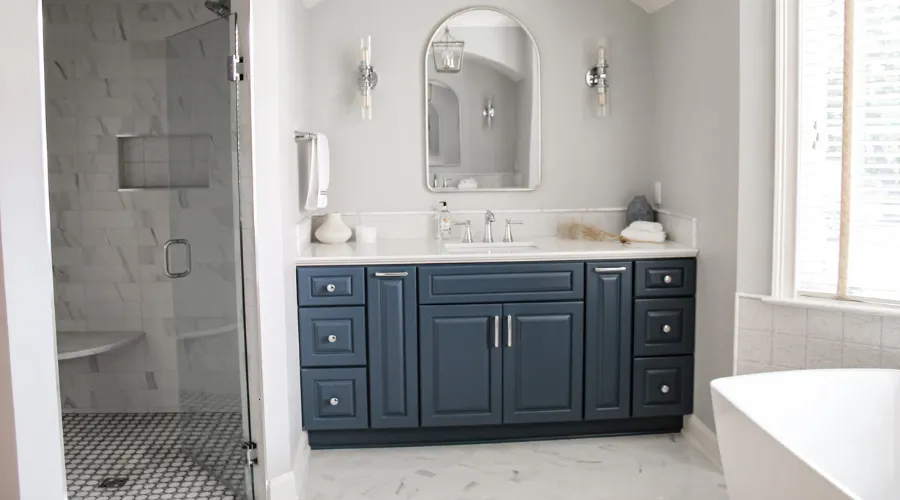
Soft pale blue is one of the most refreshing and soothing colors for bathrooms. It draws inspiration from the sky and water, instantly making the space feel calm and airy. Pale blue is particularly effective in bathrooms where the goal is to create a sense of serenity, making it ideal for primary bathrooms or powder rooms where relaxation is key. Its light, cool undertone keeps the bathroom feeling fresh without being cold or sterile.
Pale blue pairs beautifully with crisp white trim and fixtures, producing a clean, coastal-inspired look that is elegant rather than theme-driven. Natural wood accents in driftwood or sand tones bring warmth to the design, while reflective surfaces like mirrors and glossy tiles enhance the airy quality of the color. Whether used on all walls or as a ceiling accent to mimic the openness of the sky, pale blue creates an inviting and peaceful atmosphere that feels timeless.
Factors to Consider When Choosing Bathroom Colors
Selecting the best bathroom color involves more than simply choosing a shade you like. Lighting plays a critical role, as natural daylight, LED lighting, and incandescent bulbs can all shift how a color appears. Lighter colors such as white, seafoam, and pale blue can appear brighter and more vibrant in natural light but may feel muted in dim spaces. Darker tones like charcoal need carefully placed lighting to prevent shadows and maintain balance.
The size of the bathroom also affects color choice. Lighter colors help expand smaller spaces, while darker shades can make larger bathrooms feel more intimate and luxurious. The materials and finishes in the room should also harmonize with the chosen color. A well-designed palette ensures that all elements work together rather than competing for attention.
Why These Colors Stand Out in Luxury Bathroom Design
The five colors highlighted here stand out in luxury bathroom design because of their timeless appeal, flexibility, and ability to enhance premium materials. Seafoam green and pale blue evoke calmness, perfect for spa-like retreats. White offers a clean canvas that showcases luxury finishes. Charcoal creates dramatic contrast, highlighting the craftsmanship of countertops, fixtures, and lighting. Beige and taupe provide warmth and versatility, making them suitable for both traditional and modern aesthetics. Together, these colors represent a range of styles that can adapt to different tastes while maintaining the sophistication expected in a high-end remodel.
Final Thoughts
Choosing the right color for your bathroom sets the tone for the entire design. The five best colors for bathrooms offer unique benefits that can elevate your space. Whether you want a bright, open atmosphere or a cozy, dramatic retreat, these colors provide the perfect foundation. At Element, we specialize in creating bathrooms that combine beauty, function, and luxury. With the right color palette and thoughtful design, your bathroom can become one of the most inviting and stylish rooms in your home. Contact us today to get started!

